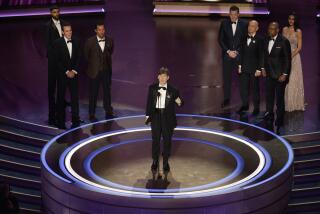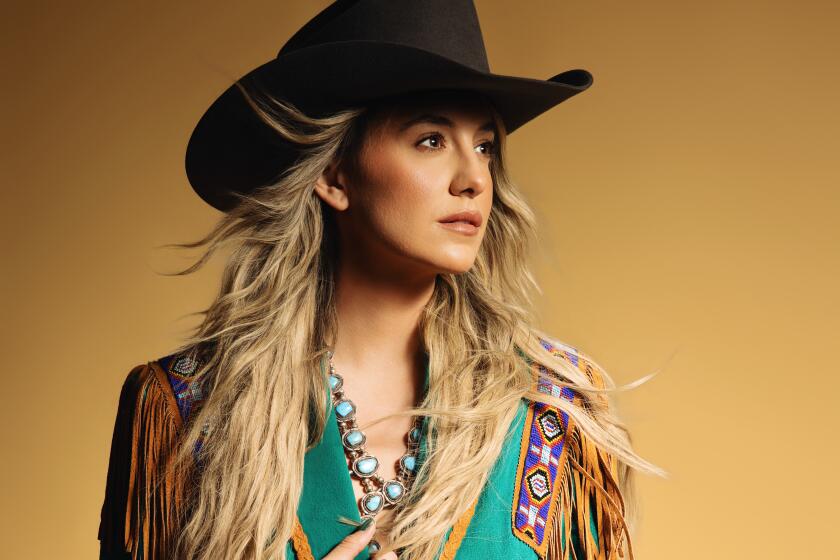Landmark movie facility reborn as audio postproduction start-up
A historic West Hollywood sound-editing facility — the place where “West Side Story,” “The Godfather” and “Top Gun” were mixed — is being given new life as an audio postproduction start-up.
The new company, called Formosa Group, has been quietly hiring sound industry veterans to compete with the biggest Hollywood studios.
The famed landmark Hollywood compound, which Formosa shares with its sister company Audio Head, has mixing rooms that replicate movie theaters in which directors and sound engineers watch films scene by scene to make sure that the dialogue levels, sound effects and music cues are correct. There are smaller rooms for editing and replacing dialogue.
PHOTOS: Hollywood Backlot moments
One room, a 134-seater with a giant soundboard and a set of couches, is where the first “Star Wars” film was mixed, back when the lot was known as the Samuel Goldwyn Studio. Formosa’s sound supervisors, including Mark Mangini, want to tap into that history.
“The Samuel Goldwyn sound department was preeminent in its day, and we get to bask in it and bring it back to its former glory,” said Mangini, who has worked on films such as “The Green Mile,” “Raiders of the Lost Ark” and “Jack the Giant Slayer.”
The location, now known as “the Lot,” was created in 1918 and sold to Hollywood icons Mary Pickford and Douglas Fairbanks. Over the years, it has been known as the United Artists Studio — after the company Pickford and Fairbanks started with fellow filmmakers Charlie Chaplin and D.W. Griffith — the Samuel Goldwyn Studio and the Warner Hollywood Studio.
Bob Rosenthal, Formosa’s president and chief operating officer, estimates that audio postproduction is a $300-million industry in terms of yearly revenue. To get its share, the company will be competing with the postproduction arms of studios Warner Bros., Fox, Sony and Universal, along with the smaller houses such as Technicolor and Soundelux.
The major studios make about 150 films each year. Rosenthal believes that Formosa can capture about 15% of that market, working on 20 to 25 major films annually, plus a few independent and small-budget pictures.
ON LOCATION: Where the cameras roll
A major studio film project could generate more than $1 million for Formosa, while some independent films could bring in less than $100,000. The company has nine movies in various stages of completion, including BBC Earth’s upcoming 3-D film “Walking With Dinosaurs” and Disney’s “Million Dollar Arm,” a baseball movie starring Jon Hamm.
The new company has eight supervising sound editors and plans to expand to as many as 12. The idea, Rosenthal said, is to be big enough to attract potential blockbusters, but small enough to remain more of a boutique firm in an industry that has been consolidating.
Kim Waugh, who oversees 18 supervisors for feature films and 10 for television as senior vice president of postproduction services at Warner Bros., said he respects the individuals Formosa has assembled.
“This is a realignment of several seasoned veterans, and it’s just one of the fundamental shifts in our community that we see every 10 years or so when talent decides to regroup under a different banner,” Waugh said.
Formosa’s four owners have long been in the business of putting finishing touches on advertisements and movie trailers, and they wanted to expand into feature films, said Tim Nett, one of Formosa’s owners.
“We all just thought it would be more fun, quite honestly, to get more into that part of the business,” he said.
PHOTOS: Horror movie locations around Los Angeles
The owners started hiring in late February. They would not say how much money they invested in the new company.
Formosa also has a facility on L.A.’s Westside and a second West Hollywood location called Formosa 66, and it plans to occupy a new building on the historic lot that should finish construction in the fall.
Meanwhile, the sound supervisors are keeping busy. Mangini recently teamed with the band Metallica on “Metallica: Through the Never,” which blends elements of a concert film and an action movie.
Veteran sound editor Odin Benitez, whose credits include “Silver Linings Playbook” and “Planes,” said his first job in the film business was on this lot. His current project is “Frozen,” a computer-animated musical from Disney in which a character — Elsa, voiced by Idina Menzel — has the power to create ice and snow. The sounds of the weather she creates help drive the story.
“Those sounds have to reflect her emotions,” Benitez said.
Formosa sound supervisor Scott Gershin is best known for movies such as “American Beauty” and Guillermo Del Toro’s “Pacific Rim,” which required very different sensibilities. Whereas “American Beauty” used silence and minimalism, Del Toro’s film pits 25-story monsters against 25-story robots.
Still, Gershin said, enhancing stories with sound means knowing when to cut away from the roars of the behemoth reptiles and the crash of metal, such as when a character dies early in the picture.
“We’ve already heard the creatures,” Gershin said. “Now we’ve got to cut to the emotion and really pull at the heartstrings.”
Rosenthal, who occupies a bungalow once inhabited by Frank Sinatra, says the new facility will be the place where filmmakers put their final, crucial touches on movies that are often just a couple of weeks away from the cinema.
“It’s the last stop,” Rosenthal said. “For the director, it’s when he or she has to let go of their project, so sometimes that’s hard. That’s their baby and it’s the last chance they have to tweak it.”
More to Read
From the Oscars to the Emmys.
Get the Envelope newsletter for exclusive awards season coverage, behind-the-scenes stories from the Envelope podcast and columnist Glenn Whipp’s must-read analysis.
You may occasionally receive promotional content from the Los Angeles Times.











